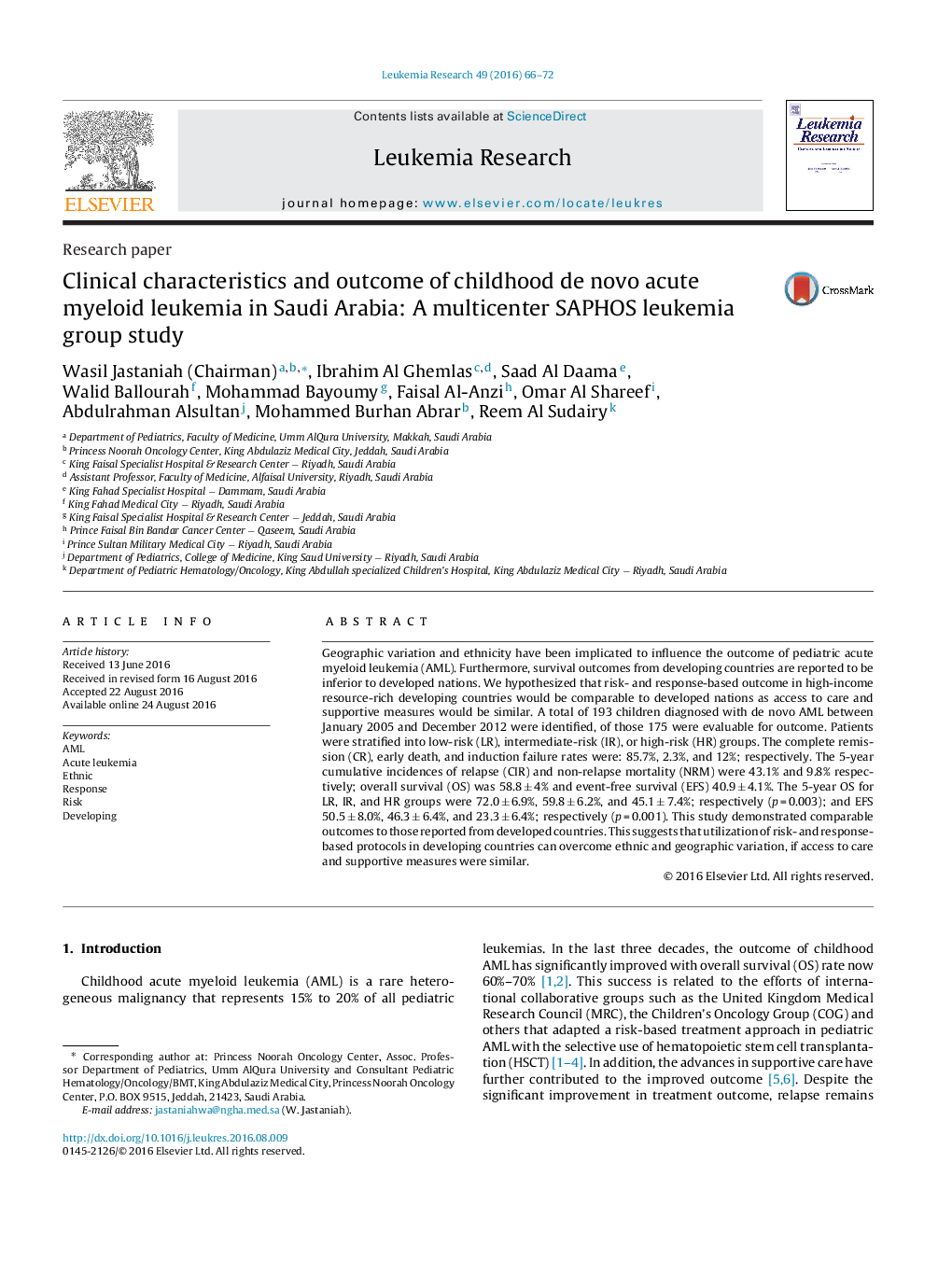| کد مقاله | کد نشریه | سال انتشار | مقاله انگلیسی | نسخه تمام متن |
|---|---|---|---|---|
| 2136337 | 1547899 | 2016 | 7 صفحه PDF | دانلود رایگان |
• We retrospectively assessed outcomes of childhood AML in a resource-rich developing country.
• Patients were stratified based on standard risk- and response-based definitions.
• Survival outcomes were comparable to those reported from developed countries.
• Use of effective supportive care measures contributed to the improved survival.
Geographic variation and ethnicity have been implicated to influence the outcome of pediatric acute myeloid leukemia (AML). Furthermore, survival outcomes from developing countries are reported to be inferior to developed nations. We hypothesized that risk- and response-based outcome in high-income resource-rich developing countries would be comparable to developed nations as access to care and supportive measures would be similar. A total of 193 children diagnosed with de novo AML between January 2005 and December 2012 were identified, of those 175 were evaluable for outcome. Patients were stratified into low-risk (LR), intermediate-risk (IR), or high-risk (HR) groups. The complete remission (CR), early death, and induction failure rates were: 85.7%, 2.3%, and 12%; respectively. The 5-year cumulative incidences of relapse (CIR) and non-relapse mortality (NRM) were 43.1% and 9.8% respectively; overall survival (OS) was 58.8 ± 4% and event-free survival (EFS) 40.9 ± 4.1%. The 5-year OS for LR, IR, and HR groups were 72.0 ± 6.9%, 59.8 ± 6.2%, and 45.1 ± 7.4%; respectively (p = 0.003); and EFS 50.5 ± 8.0%, 46.3 ± 6.4%, and 23.3 ± 6.4%; respectively (p = 0.001). This study demonstrated comparable outcomes to those reported from developed countries. This suggests that utilization of risk- and response-based protocols in developing countries can overcome ethnic and geographic variation, if access to care and supportive measures were similar.
Journal: Leukemia Research - Volume 49, October 2016, Pages 66–72
